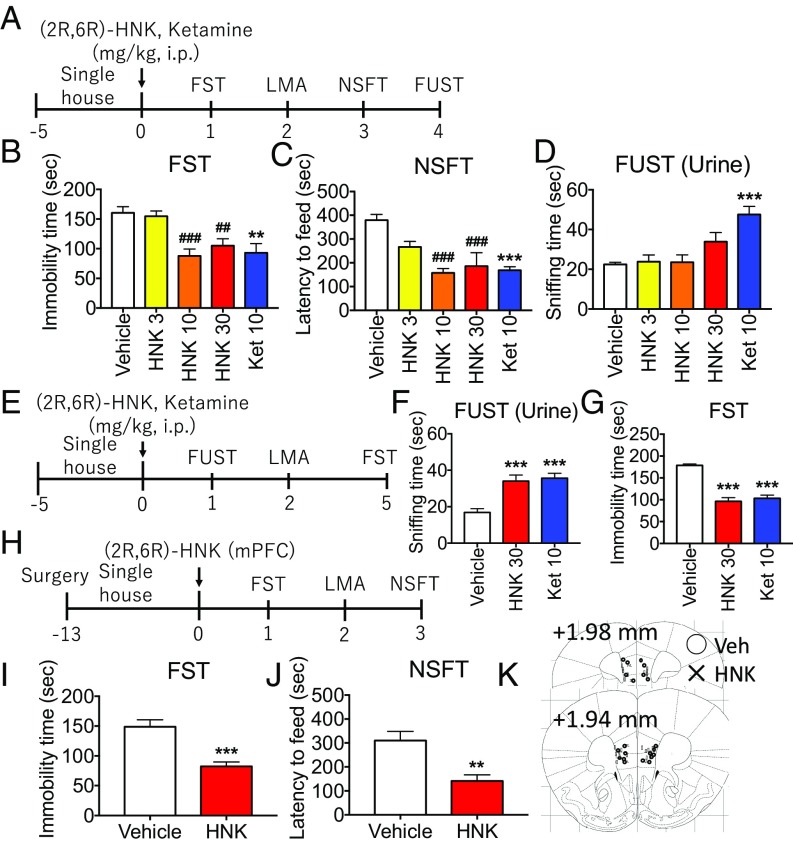Fig. 1.
Systemic or mPFC infusion of (2R,6R)-HNK induces antidepressant effects. (A) Mice were administered vehicle, (2R,6R)-HNK (3 to 30 mg/kg, i.p.) or ketamine (10 mg/kg, i.p.), followed by behavioral tests. (B and C) (2R,6R)-HNK and ketamine significantly decreased both immobility time 24 h after dosing in the FST and latency to feed 3 d after treatment in the NSFT. (D) Four days after treatment, (2R,6R)-HNK had no effect in the FUST, even though ketamine significantly increased female urine sniffing at this time point. (E–G) Studies of FUST 1 d after dosing show that (2R,6R)-HNK (30 mg/kg) or ketamine (10 mg/kg) administration induced antidepressant effects; there were also significant effects 5 d after treatment in the FST. (H) Mice received bilateral infusion of (2R,6R)-HNK (10 ng per side) in the mPFC, followed by behavioral tests. (I and J) Infusions of (2R,6R)-HNK into the mPFC induced significant antidepressant responses in the FST and NSFT. (K) Location of cannula placements in the mPFC. Bars represent mean ± SEM, n = 4 to 12 per group. ###P < 0.001, ##P < 0.01 compared with vehicle group; Dunnett’s multiple comparison test after significant results of one-way ANOVA. ***P < 0.001, **P < 0.01 compared with vehicle group; Student’s t test.

